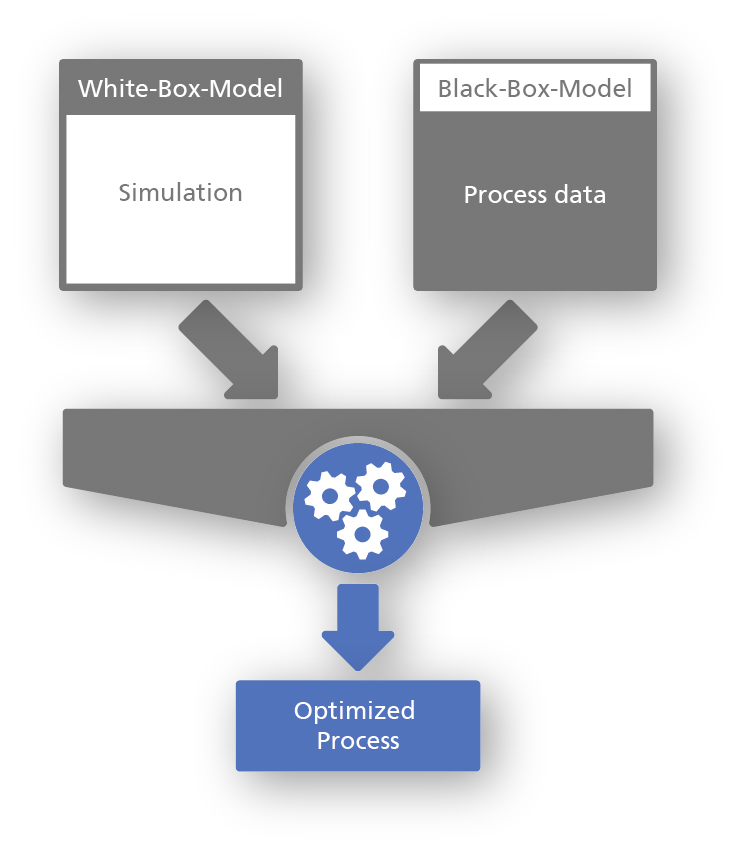Sample Application Fields
We have selected three application fields to illustrate the benefits of model-based machine learning:
- Chemical engineering process
- Pattern recognition in process data
- Forming technology
By combining and further developing the methodological competence at the participating institutes, three software prototypes are being created to demonstrate the benefits of the grey box method in finding solutions to industrial challenges.
Advantages
Machine learning has achieved impressive successes over the years in various areas, to include pattern recognition in the broadest sense, for example, text and image recognition, object classification, and personal identification.
However, machine learning applications often exclusively use a black box approach, that is, they rely on a completely non-parametric approach while no simple parametric model exists. Mathematical modeling, simulation and optimization in industry, on the other hand, are usually based on white box approaches, meaning parametric models.
The grey box model combines qualitative prior knowledge with quantitative data. This approach uses all available information about a certain industrial process to determine the best possible process model. Compared to the black box and white box models, the grey box method has the advantage of using previous knowledge and the information available from existing data.

